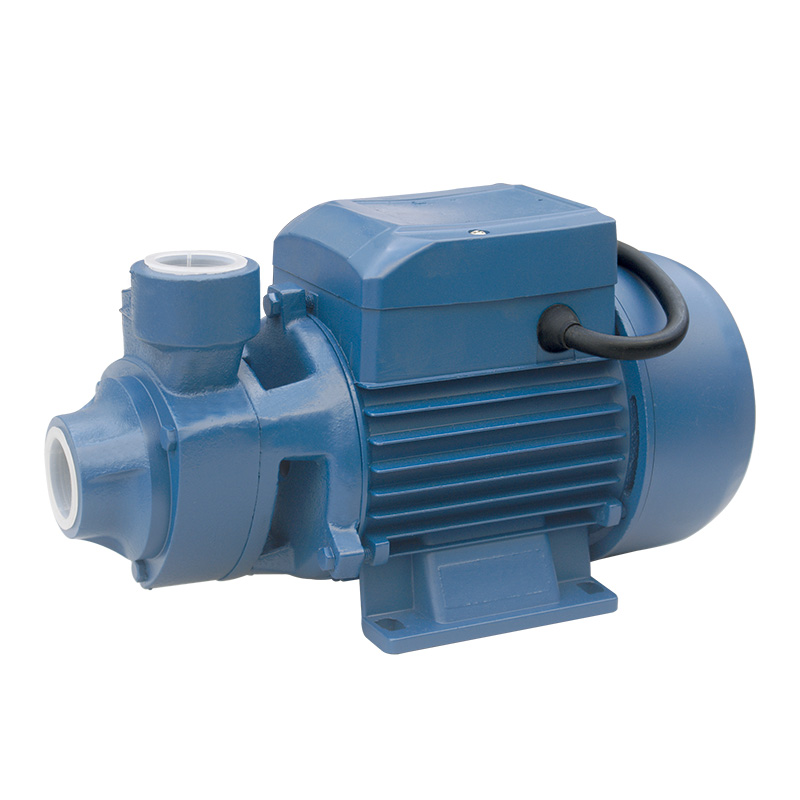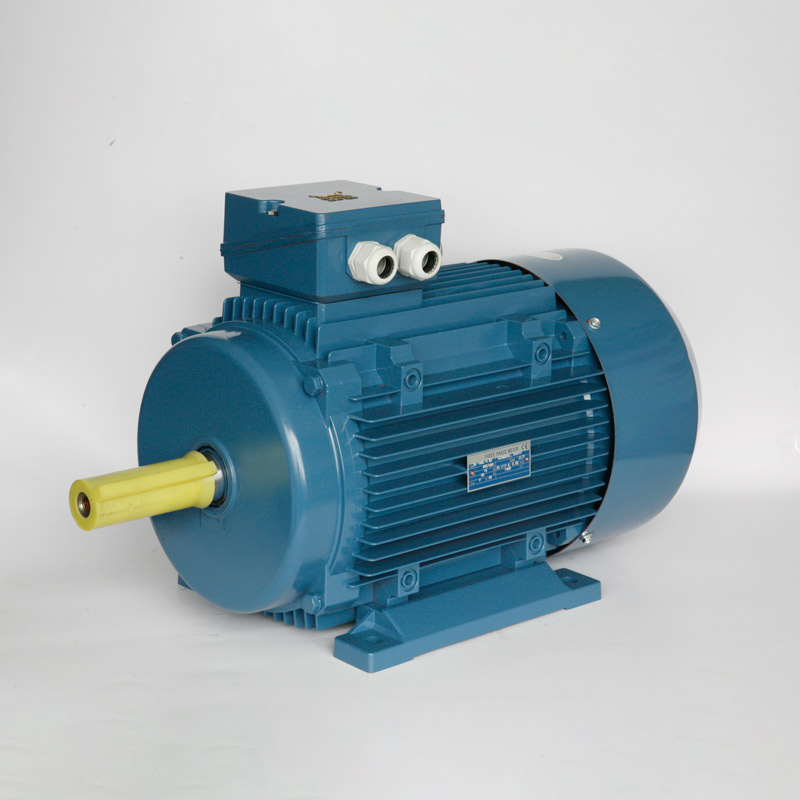Magnetic drive centrifugal pumps are popular for use in many applications with a broad range of chemicals, especially ones that are dangerous and toxic. Their popularity in chemical applications is due to several key advantages.
When maintenance is required on a pump used to transfer chemicals, safety is the first priority. Most Powerful Electric Motor

Ideally, a process hazard analysis (PHA) will have been completed before any maintenance process is performed. This is designed to address the hazards of the maintenance process and engineering to ensure worker safety.
There should be written procedures that are clear, easy to understand and provide complete instructions for the safe performance of the maintenance process.
Employees, including contract employees, must be trained in the applicable procedures and safe work practices. Training must include proper understanding of the risks of the chemicals involved and steps to address the hazards of exposure. All work, including electrical and plumbing, should be done by qualified individuals.
Confirm that the system the pump is connected to is under lockout/tagout and includes draining and purging of lines and the pump prior to preforming maintenance activities.
Always wear the appropriate personal protective gear, which may include safety glasses or chemical goggles, face shields, protective clothing resistant to the chemical being pumps and chemical resistant gloves designed to protect against the fluid being pumped.
Have a chemical spill kit available rated for the chemical being pumped, and be familiar with how the spill kit is used.
When working on magnetic drive pumps, there are two considerations not found with direct coupled pumps:
Magnetic field hazard: Magnetic fields can be defined in several ways, depending on the context. In general terms, it is an invisible field that exerts magnetic force on substances which are sensitive to magnetism. Magnets also exert forces and torques on each other through the magnetic fields they create.
Many magnetic drive pumps, especially larger ones, use powerful rare earth magnets like neodymium iron boron or samarium cobalt. When these pumps are assembled, the magnetic fields are safely contained inside the pump.
However, when the pump is disassembled, the magnets are exposed. This potentially results in maintenance workers being exposed to these magnetic fields.
For most people, these fields do not cause any issues. However, individuals with cardiac pacemakers, implanted defibrillators, other electronic medical devices, metallic prosthetic heart valves, internal wound clips (from surgery), metallic prosthetic devices or sickle cell anemia must not handle or be in the proximity of the magnets contained inside the pump. Consult a health care provider for specific recommendations before working with these pumps.
Magnetic force hazard: The magnetic attraction is powerful enough to rapidly pull the motor end and the wet end together. Many larger magnetic drive pumps use jackscrews to allow the pump to be slowly separated and reconnected to the motor. Extreme care should be taken during the disassembly and reassembly of magnetic drive pumps. Do not place fingers between the mating surfaces of the motor and wet ends to avoid injuries.
Keep the drive magnet and impeller assembly away from metal chips or particles. Magnetic drive pumps run with close tolerances between the drive magnets, and the metal chips could cause damage when the pump is restarted.
When pump components begin to wear or damage is occurring due to improper operation, improper installation or other factors like abrasives present in the chemical being pumped, there may be a decrease in performance, an increase in vibration or noise, an increase in power being consumed, fluid leakage or other signs that indicate the pump should be removed from service. Ideally, the pump will be on a preventative maintenance plan designed to correct serious issues that result in unexpected downtime.
Once the pump has been safely removed from service and decontaminated, it can be disassembled for examination. Never assume the pump is fully decontaminated when performing maintenance and be sure to wear the appropriate protective equipment to prevent exposure to chemicals still present even after decontamination.
Using the manufacturer’s installation, operation and maintenance (IOM) manual, carefully disassemble the pump and examine the components for wear, damage or breakage. Many manufacturers also offer free support for maintenance questions.
This is caused when no liquid is present in the pump when operating. Some pumps can tolerate dry running for periods of time (for example, if equipped with a carbon bushing or diamond-like carbon [DLC] silicon carbide) while others cannot.
This type of damage can be caused during installation if the pump is not properly flooded and air vented from the casing before the pump is started, even when the pump is bumped to check for proper rotation. Entrained air in the liquid being pumped or vortex induced air in the liquid entering the pump caused by improper submergence of the suction line can also cause signs of run dry damage.
Run dry damage is usually indicated by heat damage. In a pump with thermoplastic construction, melted plastic is an indicator the pump was run dry.
Also known as deadheading, this is a condition caused by operating the pump below the pump’s minimum flow rate or with the discharged valve closed for an extended period of time. During this condition, the small amount of fluid in the pump will recirculate, heating the fluid. The heating of the fluid is due to the friction from the rotating impeller.
During normal operation when the discharge valve is open, the heat is carried away by the liquid being pumped. However, if the pump is operated with a closed discharge valve, the temperature of the liquid will continue to climb. In addition to thermal damage to internal pump components from the hot liquid, the hydraulic imbalance can cause damage as well.
A closed suction valve causes the impeller to move forward and allows it to rub forcefully on the housing thrust ring. During normal operation, a liquid film keeps these surfaces lubricated and cool. This can result in thermal damage to the impeller.
Cavitation is caused when the net positive suction head available (NPSHa) is lower than the NPSH required (NPSHr) by the pump. Bubbles are formed in the low-pressure region and rapidly collapse when entering higher pressure areas in the pump, causing cavitation damage.
It tends to be more likely with hot fluids, fluids with high vapor pressures, suction sources under reduced pressure or larger impellers operating near full flow. Cavitation damage causes pitting and erosion of internal pump parts, especially the impeller.
Materials of construction must be carefully chosen to ensure they are suitable for the chemical being pumped. Refer to chemical resistance guides from pump manufacturers or consult the chemical manufacturer for recommendations. Chemical attack can cause swelling, embrittlement, softening or dissolving of the pump components.
The suction and discharge piping must be properly supported to eliminate or reduce nozzle load levels to acceptable levels. This is true for plastic pumps where it can result in cracking of the housing or connections.
Abrasives in the chemical being pumped can cause erosion in various internal components including the bushing and rear of the pump.
Foreign objects entering the pump can result in catastrophic damage. They tend to be larger items like bolts, nuts and pieces of wire. Damage can occur to the impeller, front shaft support or become wedged, resulting in decoupling.
In a synchronous magnetic drive, decoupling occurs when the inner and outer drive magnet are no longer synchronous (turning together). When the outer drive magnet turns around a non-rotating inner drive, it creates eddy currents. Eddy currents like all electrical currents, generate heat. Decoupling can be caused by foreign objects, large amount of solids accumulation or too much motor power for the magnetic coupling. If the pump decouples and is not quickly stopped, the inner drive will become hot. This can result in melted internal components.

Centrifugal Pump Pete Scantlebury is vice president of development for Finish Thompson, Inc. He has more than 45 years’ experience in several technical positions with the company and is the go-to resource on the nuances and applications of industrial pump systems. Finish Thompson designs and manufactures pumps to transfer a wide variety of corrosive fluids safely. For more information, visit www.finishthompson.com.